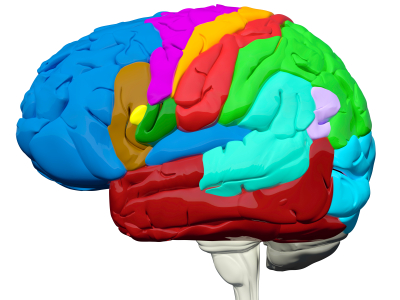|
||||||
|
||||||


|
||||||
|
||||||

|

|

What’s the Relationship Between ADHD and Executive Function? |
|
By Sheldon H. Horowitz, EdD |
|
ADHD and Executive Function in ActionThink about people you know who have ADHD. They’re the ones who have trouble listening to or following instructions, who begin tasks and then are easily sidetracked, or who struggle to wait their turn. They sometimes blurt things out when they know better, touch things when asked not to, or don’t delay reacting to something long enough to recall that they’ve been in similar situations before and are about to make a silly statement and embarrass themselves or others. What’s going on inside their brains when these things happen? Answer: a breakdown in executive functioning. Executive function deficits are not only seen individuals with ADHD. People who have learning disabilities, communication disorders or mental health disorders (such as those characterized by anxiety or depression) are also prone to struggle with executive functioning challenges. This is also the case with people who have sustained brain injuries or have medical conditions (such as epilepsy) that result in compromised brain functioning. To be sure there’s no confusion about how executive functions work, it’s important to keep in mind that these are skills and behaviors that everyone uses all the time! Let’s consider one component of executive functioning called “working memory.” Consider what happens when you need to hold information in your mind while simultaneously doing something else. If you manage to keep the first piece of information from slipping away, working memory is doing its job. Trying to remember an address while scanning a map, a new person’s name immediately after being told their phone number, the number of calories or amount of fiber in a serving of one type of cereal after reading two or three different boxes—these are everyday examples of how working memory (and therefore, executive functioning) works. Additional Resources
|

| REL#13-82 | CONTACT: Tina Jung |
| FOR IMMEDIATE RELEASE | PHONE: 916-319-0818 |
| September 4, 2013 | EMAIL communications@cde.ca.gov |
State Schools Chief Tom Torlakson Announces State Adopts Next Generation Science Standards
SACRAMENTO—New science standards designed to prepare students to thrive in a changing economy were approved today by the State Board of Education, State Superintendent of Public Instruction Tom Torlakson announced.
“The adoption of the Next Generation Science Standards in California mark a crucial step in making sure our students are prepared to succeed after they leave our classrooms,” Torlakson said. “Scientific information and technology have changed remarkably since the last time California updated its science standards, and how and what we teach have to change with them.”
The Next Generation Science Standards (NGSS) will bring science instruction up to date. NGSS emphasizes a deeper focus on understanding the cross-cutting concepts within and across scientific disciplines. These new standards integrate engineering practices with science practices to help students understand the workings of science and the natural world. They also provide a coherent progression of learning from kindergarten through grade 12, so students learn step by step the knowledge and skills they need for college and careers.
“The Next Generation Science Standards represent a huge leap forward for California’s students and our schools,” said Mike Kirst, president of the State Board of Education. “Scientific innovation remains at the core of the California economy, and schools play a huge role in equipping the workforce of tomorrow.”
Science, technology, engineering, and mathematics (STEM) related industries are major components of California’s economy. A 2011 U.S. Department of Commerce study, “STEM: Good Jobs Now and For the Future,” found that over the past 10 years, growth in jobs involving STEM fields was three times greater than that of non-STEM occupations. The report also forecast that STEM jobs are expected to continue to grow at a faster rate than others in the coming decade.
California was among the lead states that developed the standards, in a voluntary process conducted in an open and collaborative way over the last 18 months. California teachers, scientists, college professors, business and industry leaders, and educational experts all took part in an 80-member California NGSS review team that thoroughly examined the standards five times.
Next, a Strategic Leadership Team will be appointed by Torlakson to develop a plan to implement the NGSS. This includes a timeline for implementation, adopting a science framework, developing student assessments, and strategies for school districts. Once the team completes its work, their strategic action plan will be presented to the State Board of Education for approval at a future meeting.
In the meantime, California is preparing to host its first annual STEM Symposium, set for November 18-19, 2013, at the Sacramento Convention Center. This symposium will highlight how quality STEM (science, technology, engineering and math) programs align with Common Core State Standards and the Next Generation Science Standards and provide strategies and resources for program implementation.
For more information, visit the California Department of Education’s Science, Technology, Engineering, & Mathematics Web page.
# # # #
The California Department of Education (CDE) is a state agency led by State Superintendent of Public Instruction Tom Torlakson. For more information, please visit http://www.cde.ca.gov or by mobile device at http://m.cde.ca.gov/. You may also follow Superintendent Torlakson on Twitter at https://twitter.com/cadepted and Facebook athttp://www.facebook.com/CAEducation.
The State Board of Education is the governing and policy-making body for public K-12 education in California. The President of the Board is Michael W. Kirst and the Executive Director is Susan K. Burr. Board members are appointed for four-year terms by the Governor of California and are confirmed by the State Senate. For more information, please visithttp://www.cde.ca.gov/be.
California Department of Education, Communications Division
1430 N Street, Suite 5602, Sacramento, CA 95814
Main: 916-319-0818; Fax: 916-319-0100
E-Mail: communications@cde.ca.gov; URL: www.cde.ca.gov/nr/